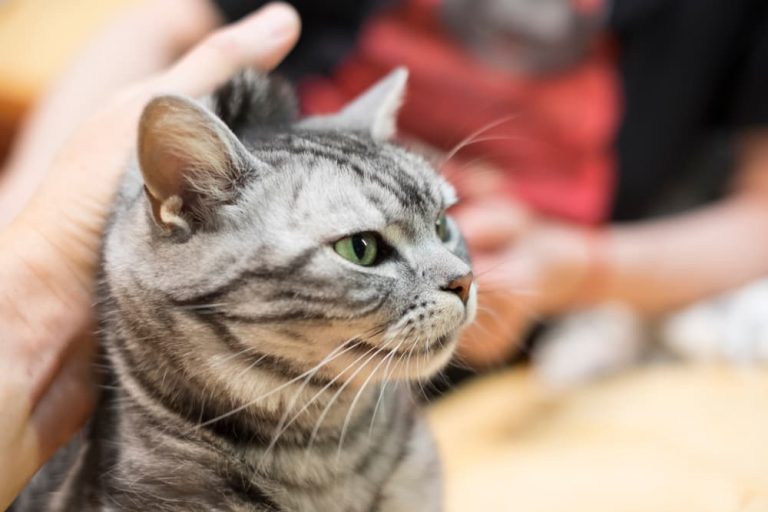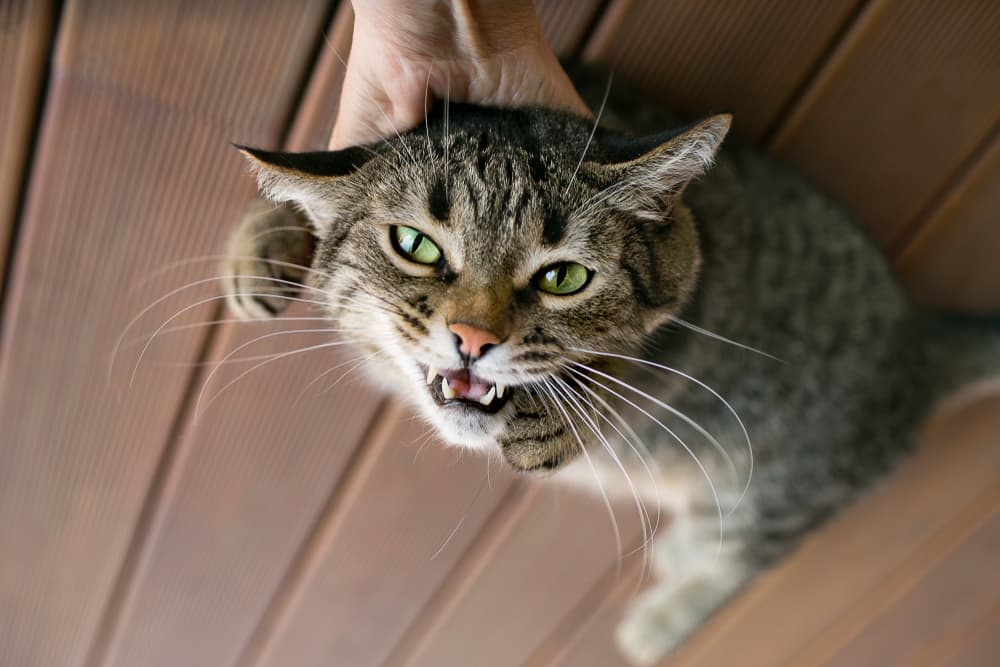6 Reasons to NEVER Scruff a Cat

Scruffing a cat is a method used to pick up cats by the skin on the back of the neck to hold and restrain them. While this is a natural behavior that mother cats do with their kittens, experts warn against humans doing it because it causes fear and stress in our feline friends. More importantly, it can cause injuries and even damage the relationship you have with your cat due to the negative associations with it.
Keep reading to find out why you should never lift your cat by the scruff of the neck. You’ll also find a better way to hold your cat.
What is Scruffing a Cat?
A cat’s scruff is the loose skin located at the back of the neck. Scruffing refers to picking up a cat by this loose skin. The behavior may have originated upon “watching [mother cats] use their mouths to move their kittens around,” says Dr. Andrew Koch, director of operations for Heart + Paw. “The kittens seem to freeze while being transported in this way,” Koch adds.
Scruffing is also used among adult cats during copulation and for showing dominance during a fight.
When humans do it, however, scruffing is an act of dominance that cats don’t like. Restraining a cat in this way takes away their sense of control and could make her scared, stressed, or aggressive.
Historically, scruffing was mainly used in veterinary clinics during examinations, nail trimming and medicine administration. While this might be an easy option for restraining a cat, Dr. Carley Faughn, animal behaviorist at Best Friends Animal Society, says it can result in fear of the veterinarian. And if cat parents do this at home, it can create mistrust between the pet parent and the cat.
Scruffing could also be painful and harmful to the cat. Since the pet is lifted off the ground or table entirely by the skin of their neck, it could be extremely uncomfortable, causing them to act out due to stress and fear. This could lead to injuries.
6 Reasons You Should Never Grab a Cat by the Scruff

Scruffing is an outdated method that has no place during handling a cat. Here are six reasons why you should never scruff a cat.
Scruffing is painful
“A firm grasp of skin at the base of the neck is undoubtedly uncomfortable for cats,” says Dr. Koch. Moreover, suspending their weight by the nape of their neck can cause pain.
It causes fear and stress
Scruffing can activate the sympathetic (fight or flight) response that increases feelings of fear and stress, explains Dr. Koch. A visit to the veterinary clinic can be stressful for cats already (due to being in a carrier, going for a car ride and being surrounded by barking dogs), and there’s no need to create more anxiety for our feline friends. It’s best to implement fear-free handling to cause as little stress as possible for the cat.
It leads to negative associations
According to Dr. Faughn, being held in an uncomfortable position and not being able to move can lead to the cat “associating that environment, person/people, and situation with fear.” This will make any future visits to the veterinarian even more difficult.
It can lead to aggressive behavior
Scruffing can cause fear in a cat. When that fear crosses a certain threshold, says Dr. Koch, the cat is likely to defend themself by biting or scratching.
Cats can get injured during scruffing
In addition to scruffing being painful, it can result in injuries if the handler is not careful. Cats may react with fear or aggression and this may cause a person to accidentally drop a cat. Further, in rare cases, some cats have skin fragility syndrome, where “their skin can rip right off the underlying fat layer,” says Dr. Koch.
It can hurt your relationship with your cat
Scruffing essentially immobilizes a cat and it is not a pleasant experience at all. This makes felines develop negative feelings for the person doing the scruffing. “Cats learn best through positive reinforcement, and this is the opposite of that,” says Dr. Faughn.
How to Properly Pick Up or Restrain a Cat

If you are wondering how to hold a cat without scruffing, there is a right way to do it. The best way, says Dr. Faughn, is to call the cat to you or approach them slowly, and pick them up with your arms and hands underneath their front and back legs, fully supporting their weight.
To lightly restrain a cat at home, Dr. Koch recommends having the cat in between your legs when “sitting cross-legged and using your hands to gently hold the cat still while you either look at something or perform nail trims or another at home procedure.”
Another good way to humanely restrain a cat is to use the towel method, which some people refer to as the “kitty burrito.” This method has been adopted by many veterinary clinics. You wrap a towel around a cat, and gently restrain them, leaving their head out of the towel.
“Once the cat is wrapped, you can safely and calmly manipulate the cat to continue with your procedure,” says Dr. Faughn.
In a situation where your cat is really stressed out, anti-anxiety medications, like trazodone hydrochloride tablets; pheromone sprays, such as Feliway; or calming treats can help facilitate the restraint.


Pheromone sprays can be used inside a cat carrier or on a towel to help a cat remain calm during veterinary appointments. Sometimes, a veterinarian may send home an oral medication to administer before bringing the cat to the appointment. If the cat gets stressed upon arriving at the clinic, injectable medications can be used to subdue the cat without scruffing.









